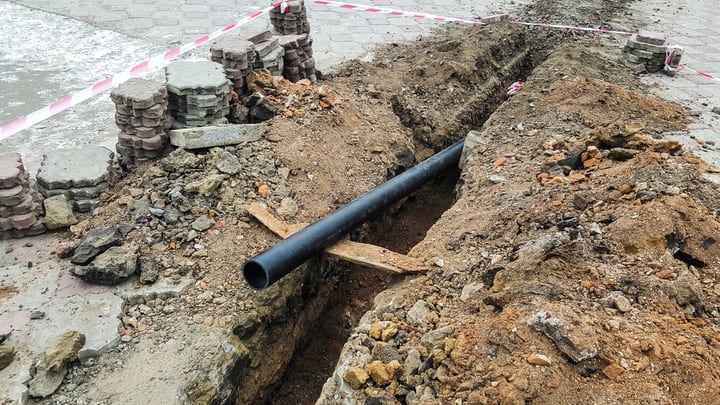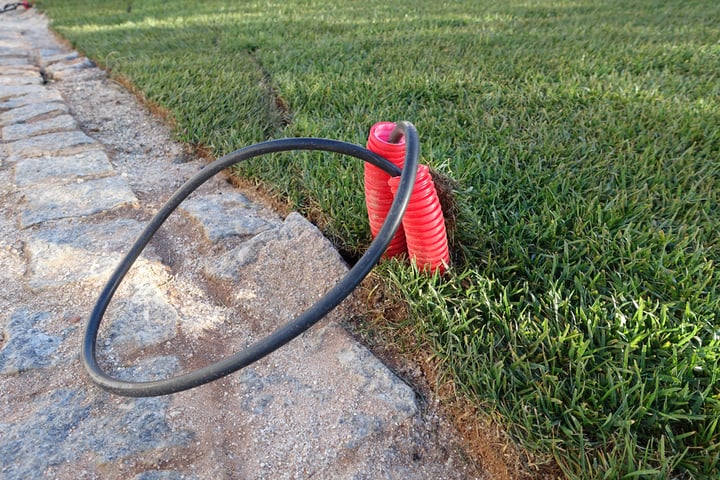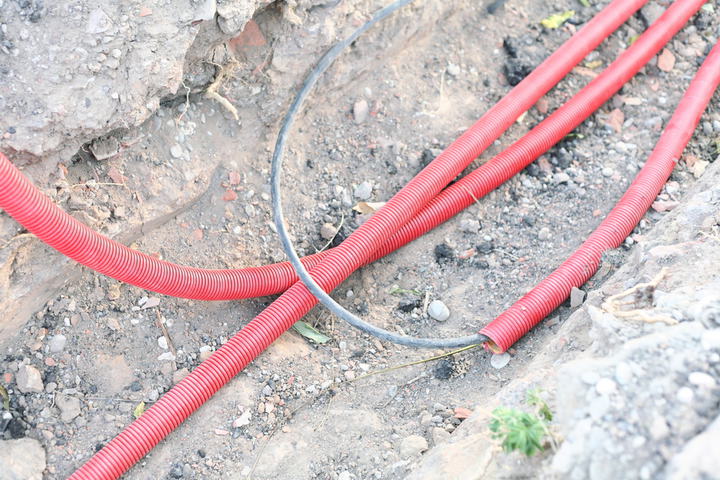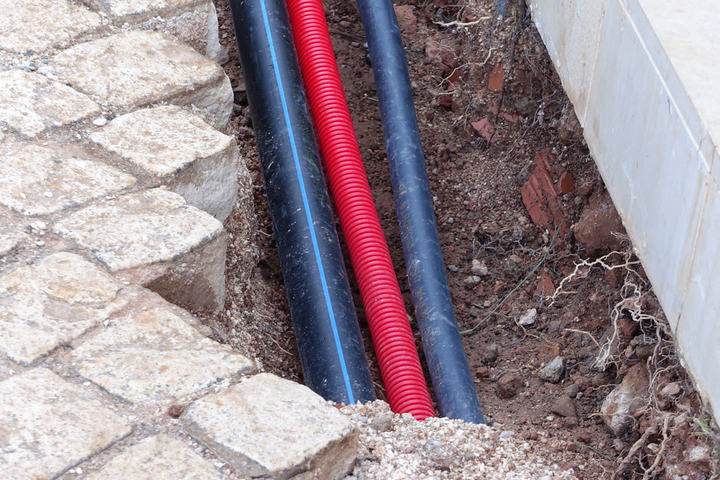When you’re putting your landscape lighting setup together, one of the most important things to think about is how you’re going to hide the wiring.
Leaving it exposed completely spoils the look of your outdoor space, and it’s a trip hazard too.
That’s why landscape lighting is generally manufactured to be safe to bury underground. But what about when you reach somewhere you can’t bury it?
What about when you want to connect landscape lights on either side of your sidewalk or driveway, how do you get around that?
You can use a flexible drill bit to bore a hole underneath a sidewalk or hammer a conduit pipe under the sidewalk slabs. For wider driveways, you’ll need to identify where the expansion joints are, saw through those to lay your wire, and then cover with a joint expansion filler.
Each of these options needs a little more explaining so let’s take a look at:
- The two ways to run wire under a typical sidewalk
- Whether you need to shield wire under a sidewalk
- The best way to run wire under a wider concrete driveway
How To Run Landscape Lighting Wire Under Sidewalk?

There are two main options for running landscape lighting wire underneath a sidewalk.
Here is a video summary before we move on.
Flexible Drill Boring
The first is to use a flexible drill bit to bore a hole under the sidewalk. You’ll need to pick up one of these drill bits (Amazon), and you’ll also need any household drill.
Start by removing a section of the grass on either side of the sidewalk until you can see the bottom of the slabs.
You’ll need around 12 inches of the trench on the side you’re drilling from.
Then you simply place the drill bit under the slab, with a bit of flex to keep it level and begin slowly drilling to bore a hole underneath the sidewalk.
You may need to reverse and retry a few times to get through stubborn debris, but you should be fine as long as you take your time.
Slow and steady is better here since you want to keep it nice and level.
Once the drill bit is through the other side, you can tie your wire to the drill bit (it has a hole designed for this purpose) and then pull it back through, feeding the wire through the hole you’ve created.
Conduit Boring

The alternative method is to use a metal pipe as a conduit for your cable and simply hammer it underneath the sidewalk to bore the hole.
You’ll need a length of pipe that’s around 12” longer than the sidewalk.
And for this method, there is more digging involved – to keep it level, you need to dig a trench the length of the pipe next to the sidewalk to lay flat.
Plus, you’ll need an extra six inches or so for clearance for your hammer.
Once you’ve dug the drench, take your hammer and flatten the side of the pipe that you will bore.
You do this for two reasons – it makes it much easier to get through the earth, and it prevents the soil from filling the pipe and causing a blockage.
Place the flattened edge against the earth, and then use a large hammer or sledgehammer to gently tap it from the other side, slowly boring the hole through.
Again, take your time; otherwise, you’ll damage the pipe.
Once the pipe is through, you can use a saw to cut off the flattened end, leaving a nice open pipe that you just need to feed the wire through.
Which Method Is Best?

Both methods have their advantages.
With the drill boring method, there’s a lot less digging involved. Still, the pipe method gives you a ready-made conduit to protect the wire – it’s not essential (more on that below), but it will just add an extra layer of protection just in case.
The pipe method is also useful if you need to run multiple wires under the sidewalk, as long as you use a pipe wide enough to accommodate them.
How To Shield Wire Under The Sidewalk?

There’s no need to shield wire under the sidewalk, providing you’re using direct burial cable.
If anything, wire running under a sidewalk is actually already protected more than your other wiring because you’re hardly going to accidentally dig up your sidewalk.
You usually should be burying wiring between 18 and 24 inches deep, but you’re unlikely to dig that low beneath the sidewalk.
The reason for that depth is because of accidental digging, though.
Adding a conduit will at least protect the wire if you massively renovate your garden space later and remove the sidewalk, forgetting about the wire.
But that’s being extra careful.
If you’re going to use a conduit, then the easiest option is a metal pipe since you can use the boring method above to put it in place – feeding a PVC sleeve under a sidewalk without filling it with soil is unnecessarily difficult.
How To Run A Wire Under Concrete Sidewalk or Driveway?

Trying to bore a hole underneath a wide concrete sidewalk or driveway is a much more difficult task.
You won’t find a drill bit long enough to do the job, and it’s unlikely you’ll be able to dig out a trench long enough to keep a pipe level to hammer under it.
Instead of going under the driveway, you’re going through it – specifically, through the expansion joint.
Concrete driveways have expansion joints designed to prevent the driveway from cracking or sinking as it expands and contracts, which it will do as the temperature rises and falls.
All you need to do is find these expansion joints – look for a thin gap – and then use a saw blade to cut through the material in the joint, whether that’s wood or felt, or any other filler material that’s been used.
Once done, lay the cable in the gap you’ve created, and then re-seal it with a dedicated expansion joint sealer (Amazon).
This will prevent water from getting under the concrete and causing it to sag.
Final Words
You don’t need to panic about having to do any significant landscaping on your sidewalks or driveways when you’re laying cable for your lights.
You’ll just need a few extra tools and a bit of careful planning.
Maybe you’ve got your own creative solutions of how you’ve managed to get around paved areas?
And if you’ve any other questions about how to install your landscape lighting, I’ll be happy to answer them.

